Fifteen years on from his first bike touring trip, Gravel Alliance rider and ultra-distance racer Sofiane Sehili unpicks all the reasons why travelling by bike around South East Asia is the next item you should add to your bucket list.
Roughly fifteen years ago, my life took a turn for the better. I went to Laos and bought a second-hand mountain bike in a rental shop. Equipped with this old clunker, I set out to explore the mountains of Indochina. It was here that I discovered bike touring and fell in love with this hybrid version of travelling and cycling. At that time, I had no experience as either a solo traveller nor as a cyclist - I was nothing but a rookie backpacker who wanted a bit more out of his first trip far from home. This made the journey a bit more challenging, but also much more adventurous.
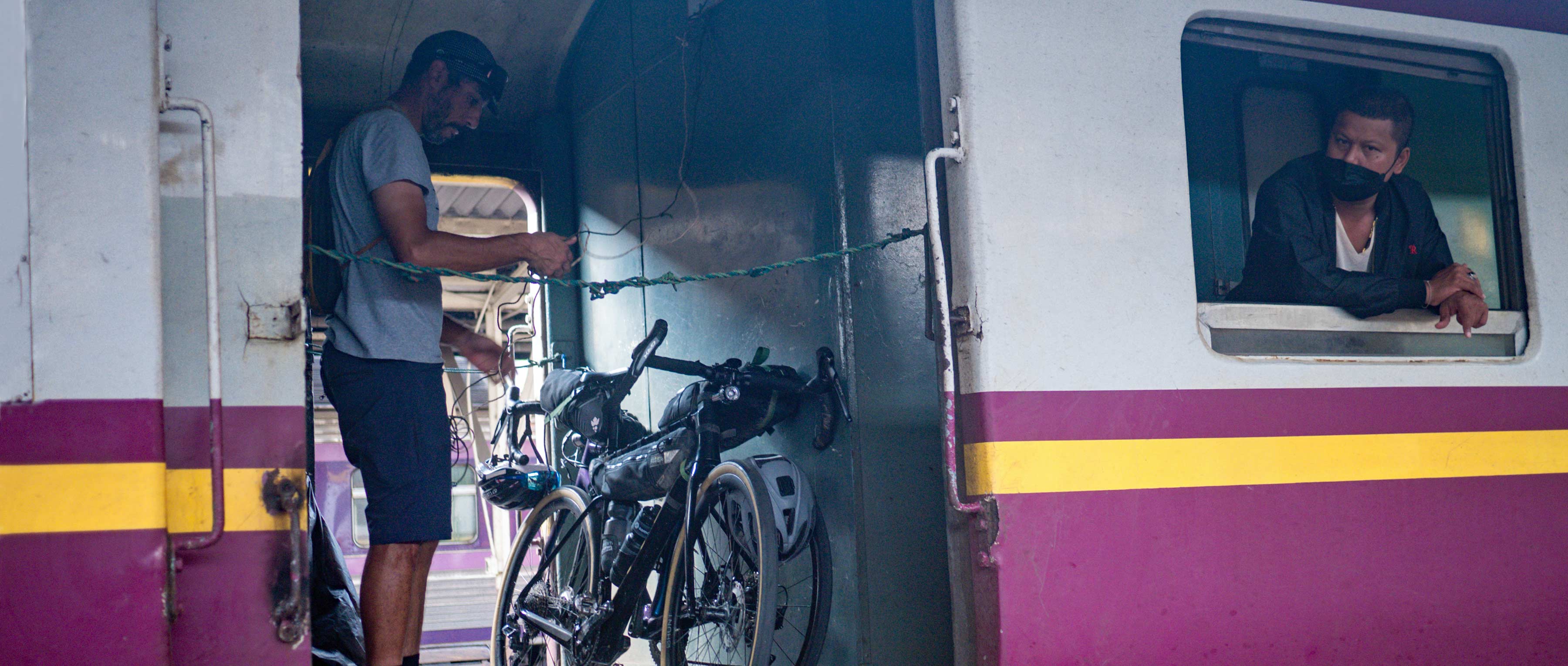
“Partway into the train journey, we decided to ride the rest, despite the jetlag”
Last winter, I went back to South East Asia to show my girlfriend Fanny my favourite places in this part of the world. This time around we had proper bikes. We landed in Bangkok and decided that we wanted a bit of a seaside holiday before tackling a pretty long bike tour. Our plan was to hop on a train down to the peaceful town of Prachuap Khiri Khan, which is not that far from Bangkok, but Thai trains are slow and we’re not very patient. In the end, partway into the train journey, we decided to ride the rest, despite the jetlag.
For me, trains are the second-best means of transportation (after bikes) when it comes to travelling. Especially in a country like Thailand, which has a good network and somewhat reliable schedules. We enjoyed this first stint on the railway but, after a few hours, we were eager to ride our bikes.
Bikepacking in tropical climates is not without its challenges. Obviously, the main one is heat and then add in 90% humidity even on cooler days and you’ll admit it sounds pretty uncomfortable. But despite the conditions, I can't imagine a better way to get a feel for what a country is about than by cycling through it.
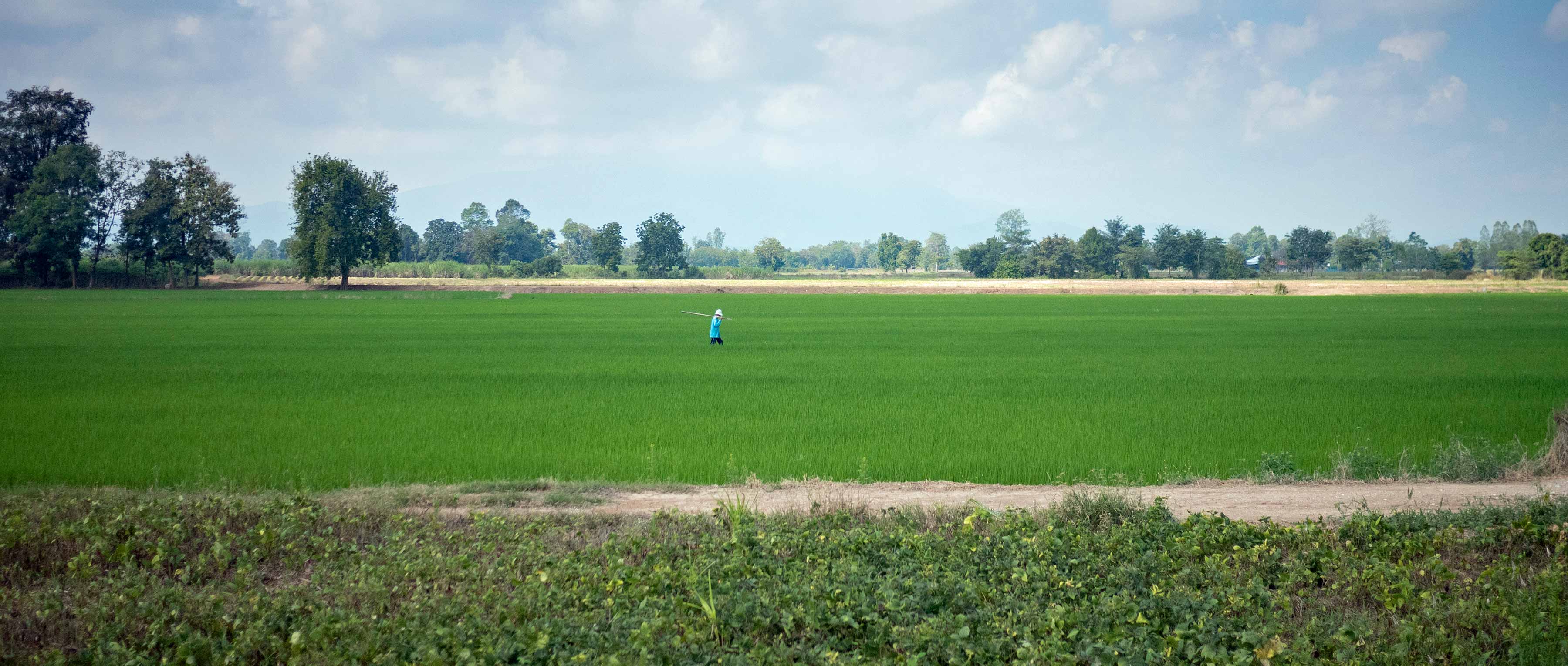
Firstly, riding lets you map out the most accurate picture of a country's geography and terrain. We found out that western Thailand is as flat as a pancake. These were seriously some of the flattest roads I've ever ridden and it made a good preamble to the climbing fest that the Chiang Mai and Mae Hong Son provinces had in store for us. Once there, our route took us all the way to the top of Doi Inthanon at 2,557m. The climb lasted 22km with an average gradient of 8.6%, so calling it challenging would be an understatement. Doi Inthanon is a mega climb and it's by getting up there using solely the power of your own two legs that you realise how tall Thailand's highest mountain really is.
But perhaps the greatest gift a bicycle gives you during your travels are the random, nondescript places where you end up stopping to eat or fill up your bottles. These tiny villages where they seldom see foreigners have local eateries where you're not quite sure what you're going to end up munching on.
Buses, cars and trains usually take you directly to the main spots - the white sandy beaches of the Andaman sea, the ruins of Sukhotai, the bridge on the River Kwai, the temples of Chiang Mai... Sure, all of these are worth seeing, but they're also the spots where you're lost among the other tourists. The places that lack authenticity because they cater to people from all over the world.
For me, there is nothing quite like the small towns that go unvisited by tourists. The bicycle is unrivalled as a means of transportation in that it not only takes you to where you need to be, it also justifies your presence here. You don't need to fill up your time with activities you picked in a guidebook. Sure, you can if you want, but if you don't really care about the caves, the stupas or the other tourist attractions - the riding will keep you busy. And whatever time you're not spending in the saddle, it's pretty much guaranteed that you'll spend it eating.
Now you can rejoice because it’s no secret that Thai cuisine is one of the best in the world. And with numerous stops, we had the chance to sample a wide variety of dishes besides your typical fried rice and pad thai. Most of the time for the better, but sometimes for the worst. Thai food is not only one of the best in the world, but also one of the spiciest. And while touristy spots know how to accommodate western palates, food stalls that cater only to Thai people will give you a taste of the real heat that some of these dishes pack. Once or twice, the level of spiciness brought actual tears to Fanny's eyes. After I taught her to say not spicy in Thai (“mai phet”), things got a bit better.
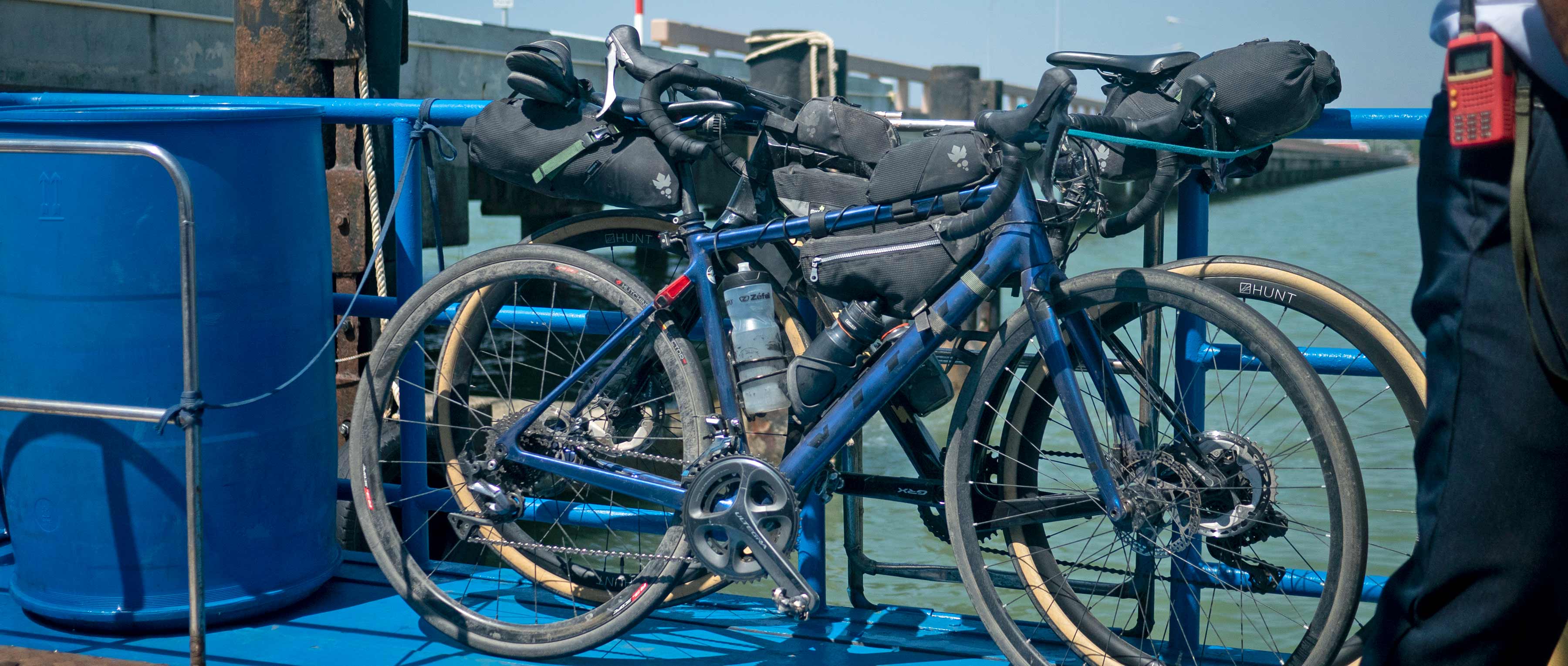
After three weeks, our trusty steeds brought us to Laos and reminded me how crossing a border on two wheels will always feel special. After significant time spent pedalling, anything that materialises the distance covered is always welcome. And even if I've spent more days bikepacking than I can count, I'm still amazed by how far a machine as simple as a bicycle can take you.
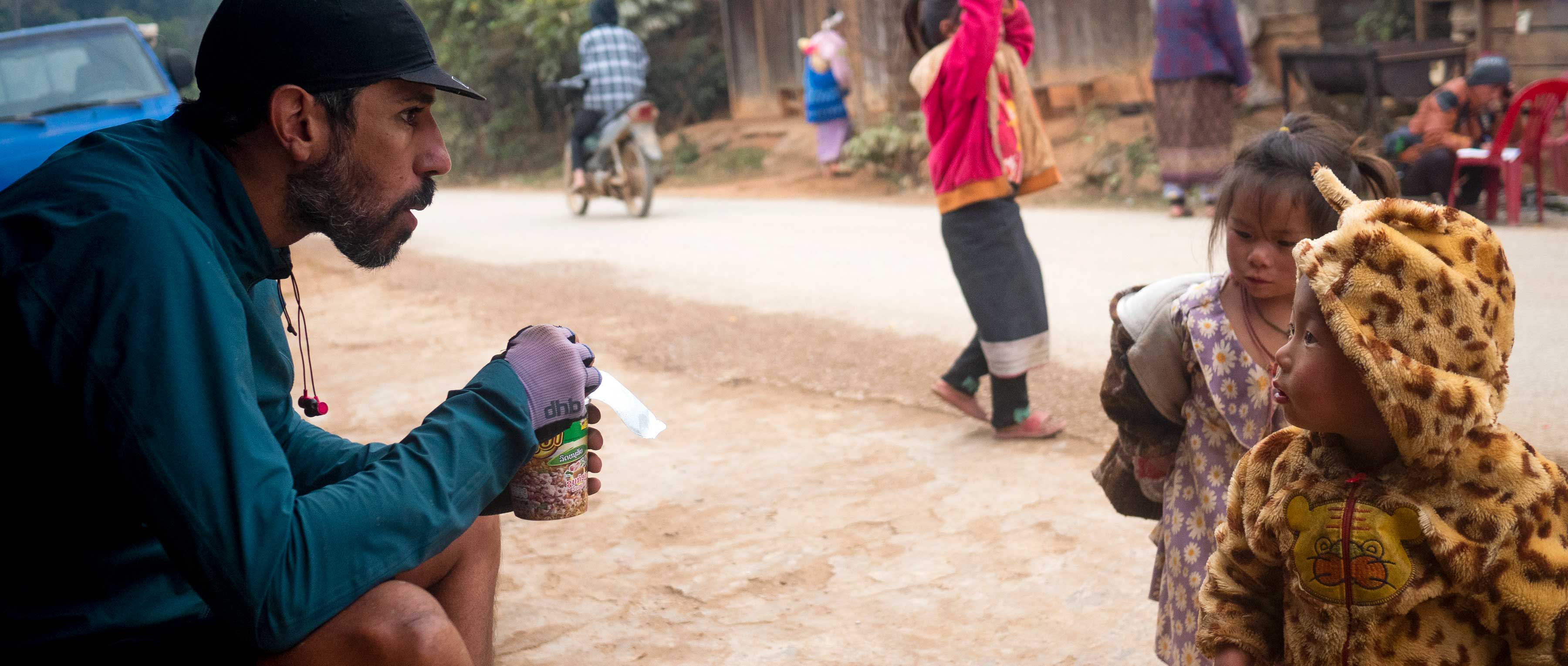
While Thailand and Laos have similar languages and cultures, they are very different in terms of wealth and population density. Laos is poorer and more sparsely populated. But with only a handful of roads and very few cars, it is a dream come true for biketourers. It may, however, not be so dreamy for foodies. The many villages that scatter the roads connecting the major towns, and therefore typically the places where you stop for lunch, offer limited options. Sticky rice and fried eggs is your best bet. When even the simplest of meals is not available, you can resort to a bowl or two of instant noodles aka the true lifesaver.
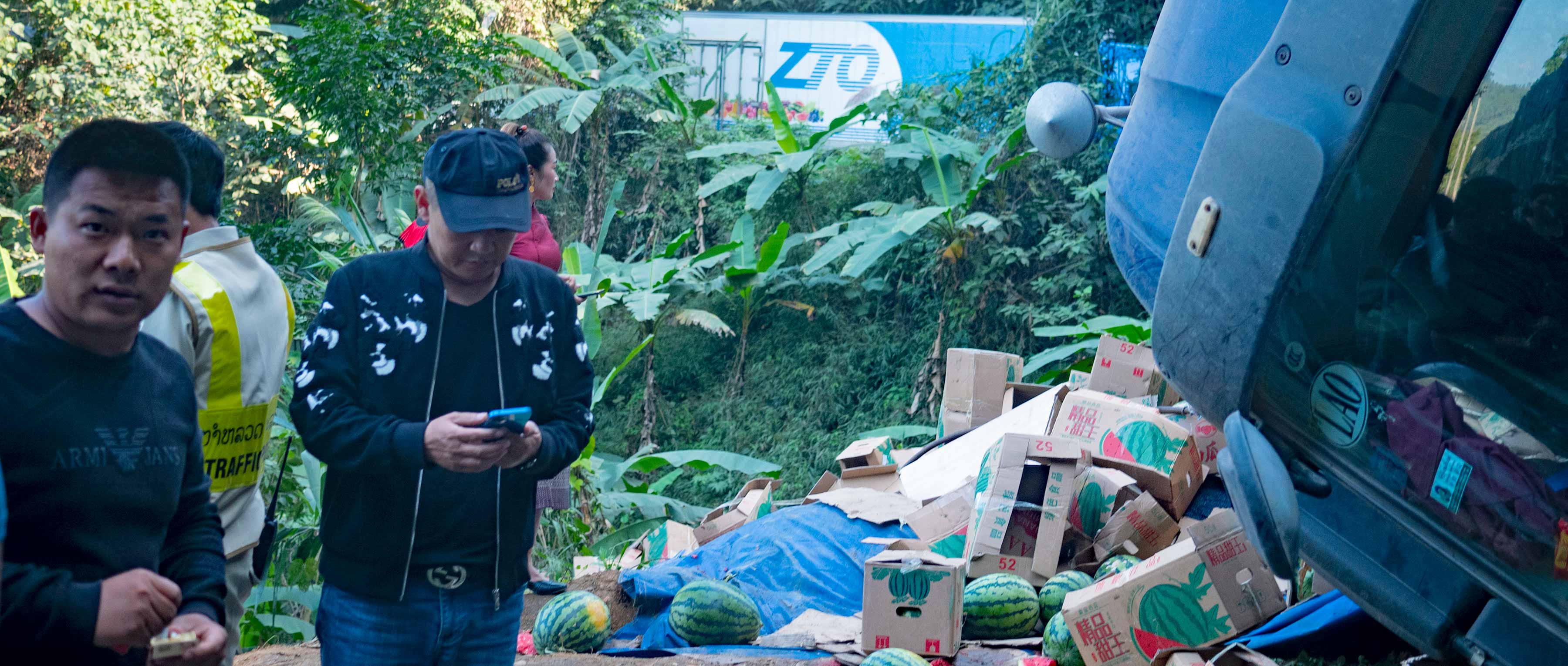
Again, thanks to the bikes, you come in close contact with the population. You get a glimpse into the life of the village. The men building a bamboo house or butchering a cow. The women carrying the firewood or washing their sarongs in the river. Life is slow in Laos and the pace of a bike seems to be in perfect harmony with the country. On our way out of the village of Luang Namtha, we passed a huge traffic jam caused by a watermelon truck which had tipped over. Everyone was calm, patiently waiting for the situation to be taken care of, which in all likelihood would take several hours. Snaking between cars and trucks with our bikes, we only lost a few minutes - had we been in a bus we probably would have lost half a day.
Making quick work of northern Laos, we found our way to Vietnam. After the bridge-based border crossing as we entered into Laos, this time we crossed a border at the top of a pass. Border guards were efficient and we entered the country in no time. Our first stop was Dien Bien Phu, a place where Ho Chi Minh's army defeated the French colonialists on their way to independence. While I'm French, my family comes from Algeria, a land that has also been colonised. So being here, where a people who had been exploited for decades finally defeated their oppressors on their way to freedom, was pretty emotional for me. Dien Bien Phu felt like a place of victory rather than defeat.
In contrast to slow and sleepy Laos, Vietnam was a shock to our systems. Busy, bustling, noisy - it kept us on our toes at all times. Thousands of honking scooters, pedestrians, dogs and chickens create perpetual movement and visible confusion. We tried escaping this organised chaos by heading for the mountains. But as we gained altitude, the temperature dropped to alarmingly low numbers. Not being equipped to ride long days in the cold, we decided to change our plans and instead of tackling the high passes near the Chinese border, we headed south in search of warmth. During this cold spell, we found comfort in what would become a real addiction - cà phê sữa nóng - Vietnamese coffee with condensed milk. A hot, thick, sweet, almost chocolatey beverage made with locally grown robusta coffee. It quickly became impossible to start the day without one. And multiple stops were made mid-ride to satisfy our craving.
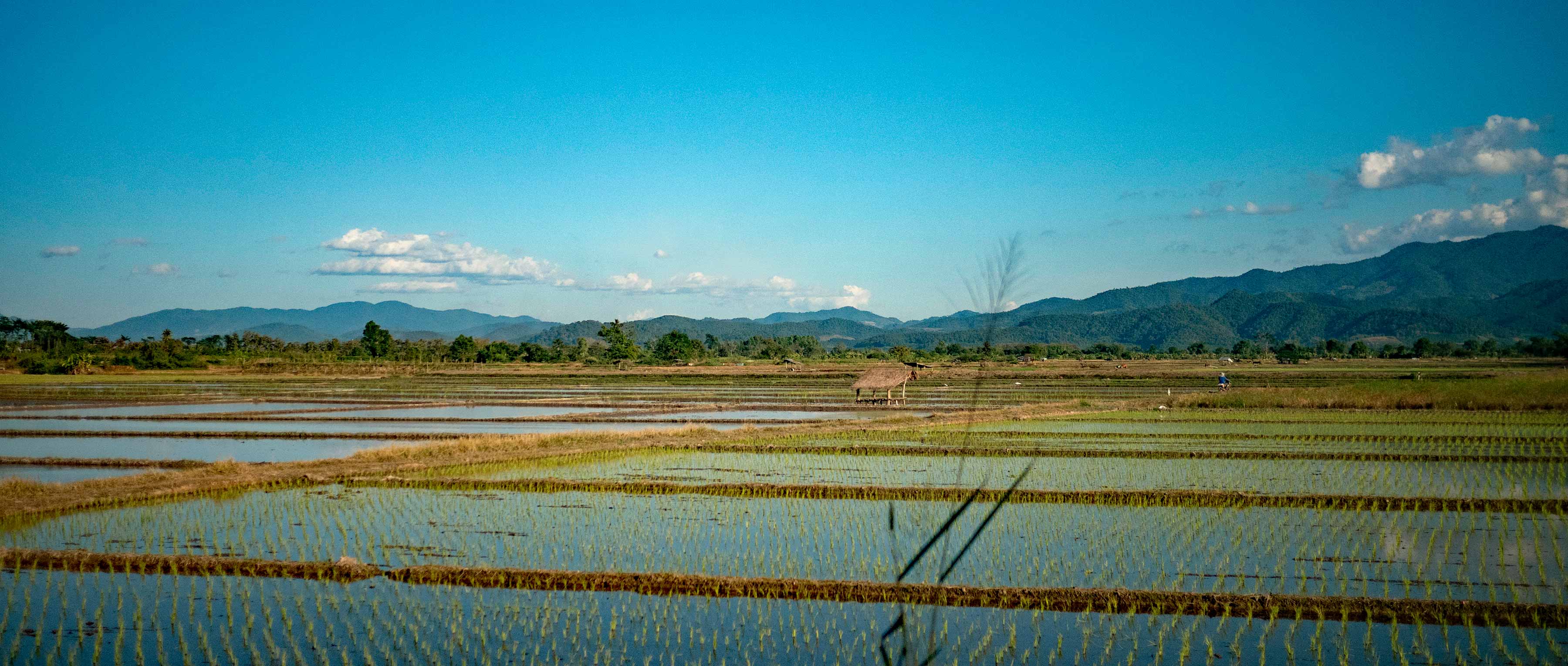
As our Vietnamese odyssey was nearing its end, we accidentally stumbled upon the little paradise that is Mai Chau. A cute village, surrounded by rice paddies and mountains where we found the best guesthouse of our trip. We spent a couple of days there, doing little else but eating delicious Vietnamese food, cleaning our clothes and our bikes, wandering in the rice paddies. A great way to say goodbye to Vietnam. Or so we thought...
Some days later, we made it to the Laos border, which is where we hit the lowest point of our trip. After the Covid closures, when Laos reopened its land border with Vietnam it changed its policy and stopped delivering visas on arrival. And Laos being Laos, there was no website where this information was available. The only way to cross was to get a visa at the embassy in Hanoi. I couldn't believe it! But somehow, I had to.
“Some days later, we made it to the Laos border, which is where we hit the lowest point of our trip”
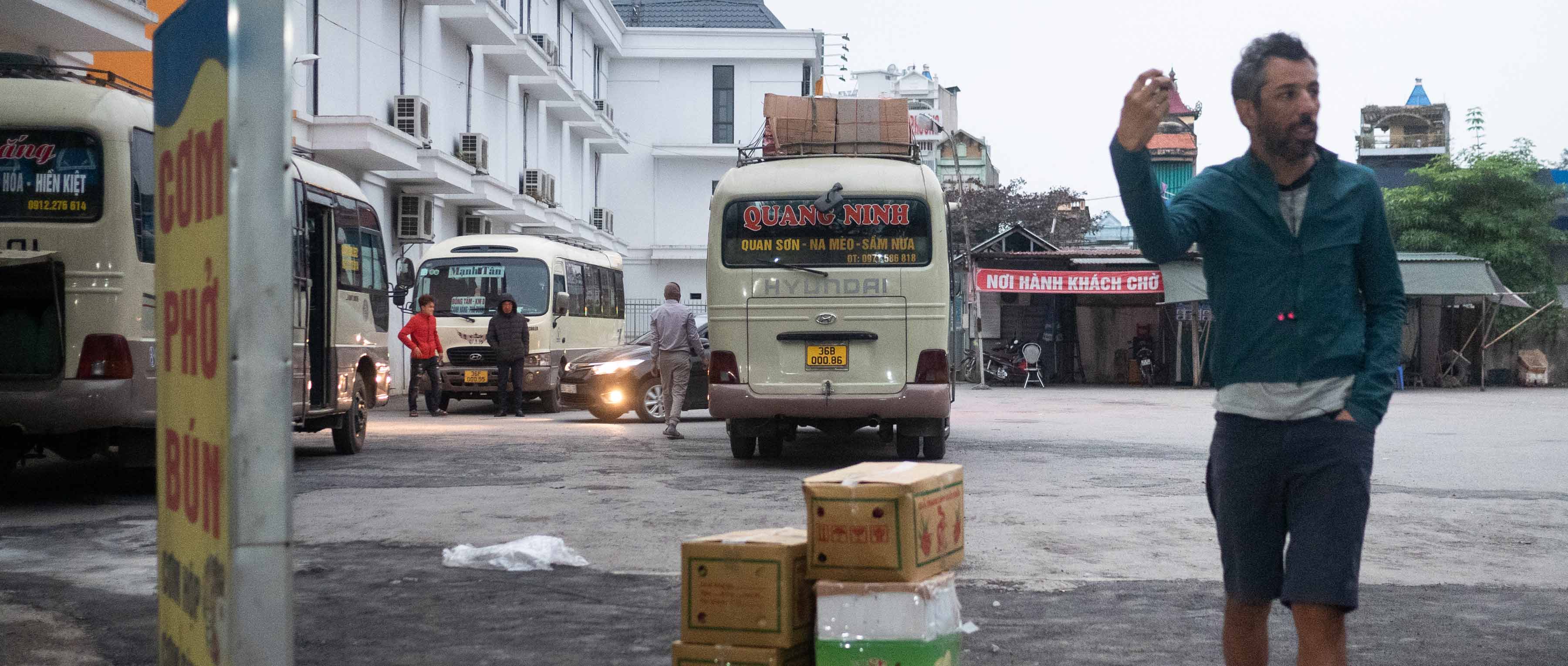
As our Vietnamese visas were about to run out, we had no time to ride to Hanoi. We had to stay in the only hotel in this small border town and to say it had seen better days would be a wild understatement. It was as dirty and run down as you can imagine, with no hot water nor electricity. The next morning a small bus brought us to a city where we would find a bus to Hanoi. It took 6 hours to cover 180km. Then we had to deal with a taxi driver who tried to rip us off as we were trying to get to our Hanoi-bound bus. In the end it took us 13 hours to go from the border to Hanoi. Not much faster than on a bike. Thankfully it just took half a day to get the Laos visa. We then hopped on a train to go back to the city of Thanh Hóa, where the next morning the border-bound bus was waiting.
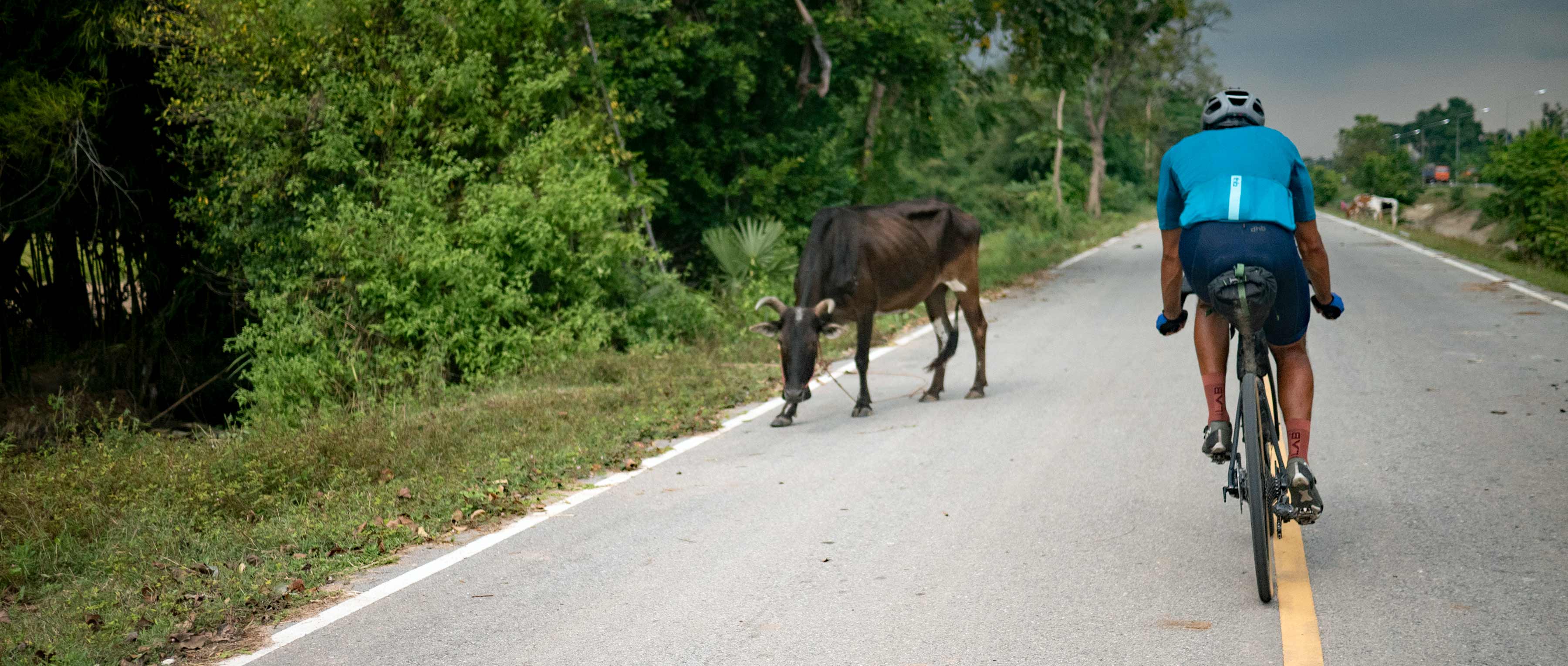
That whole trip made me realise how exhausting, frustrating and just plain inefficient it is to travel without a bike. The constant bargaining with bus and taxi drivers trying to rip you off. The perpetual quest for uncertain information about where the little buses leave from and at what time. Cycling is so simple in comparison. You plot a route, you leave when you want, you go as far as you can. No nonsense. You just ride.
It would be hard to describe the elation we felt when we got back on our bikes and pedalled out of Vietnam and into Laos. So, I'm not going to try. Let's just say that even though it was a cold and grey afternoon in the mountains of north-eastern Laos, it felt like the sun was out and even the steepest of climbs seemed easy.
Our second stint in Laos turned out to be even better than the first one. Better roads, less trucks, better and more diverse scenery. And after bustling Vietnam, sleepy Laos suited our mood better. It was bitterly cold at first, especially at night in the hotels. But as we progressed south towards Thailand, the weather got better. I was happy to discover a part of the country where I had never been. South of Phonsavan, we rode through a forest that had been flooded following the building of a dam, creating a strange but strikingly beautiful landscape.
While we really enjoyed these five days in Laos, we were eager to get back to Thailand - mostly for better accommodation, better food, the general convenience of everything and the smiles. Laos and Vietnam are more adventurous destination, suited to people who don't mind roughing it out. And sure we don't mind, but we envisioned this trip as more of a holiday then an adventure. And for a holiday, nothing beats Thailand.
We crossed the friendship bridge on the Mekong and stopped in Nakhon Phanom, where we found a great night market overlooking the river.
“Riding a bike, even on a flat boring road while getting rained on, is still better than spending six hours in a Vietnamese minibus”
We were aiming for the island of Koh Kut to spend a few days at the beach before going home. On the way there, we wanted to hit the Kao Yai national park, but the route confirmed to me that Eastern Thailand does not offer the best riding in South East Asia. We had a couple of nice days on the way to the national park, but we also had a few boring, flat stages with not much to look at. The cold of Vietnam and Laos was a distant memory, but the rain caught us on at least one occasion… But riding a bike, even on a flat boring road while getting rained on, is still better than spending six hours in a Vietnamese minibus.
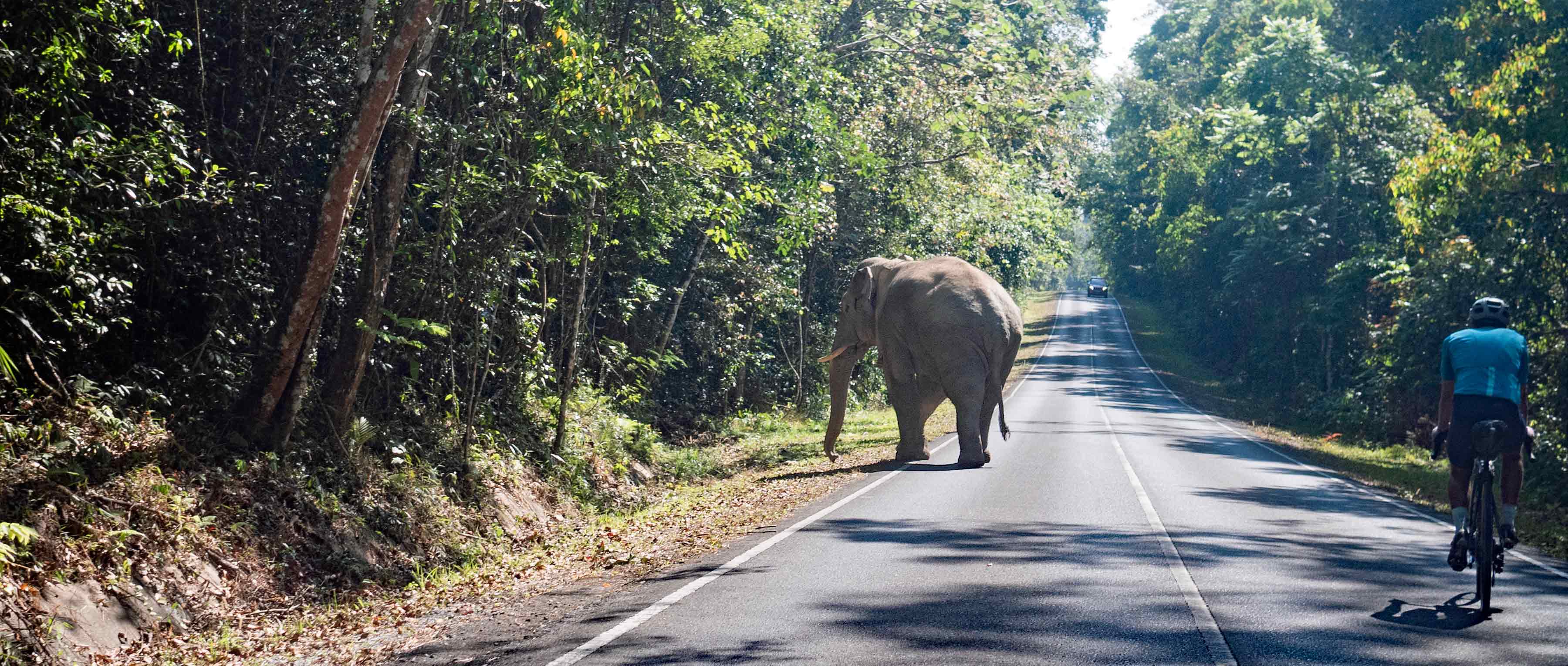
We finally reached the Kao Ya, desperate to see an elephant. We’d seen them on posters, on road signs and even painted on the tarmac, but traffic was dense in the park with people coming from Bangkok for the weekend. And elephants are like cyclists - they don't like cars. We were avidly looking left and right, but to no avail. As we were getting close to the exit of the park, the traffic had got a bit lighter and at one point we spent five whole minutes by ourselves, without the sound of any engines. That's when it came out of the jungle – a giant, massive, huge, enormous elephant! Just when we had abandoned all hope of seeing one, it crossed the road slowly and our faces lit up with a big smile.

The next and final step for us was the pristine water and white sandy beaches of Koh Kut. A lesser-known Thai island off the coast of Cambodia. Holiday mode was in full swing for five days, except when we had to climb the 20% gradients that would get us from one deserted cove to another. Honestly, we're not normally the beach bum type, but after so many days on the bike, it felt really good to unwind. And the picture-perfect beaches of Koh Kut are undoubtedly stunning enough to lure anyone into a life of sunbathing and dolce far niente.
“After riding 6,000 km across three countries, it was time to go home”
Once our batteries felt somewhat recharged, we headed back to the bustling city of Bangkok or, as the Thais call it, Krung Thep, which means the City of Angels. After riding 6,000 km across three countries, it was time to go home. As they say, all good things must come to an end.
But what they don't say is that all good things happen on little two-wheeled machines propelled by the spinning of your legs. But it's okay that they don't say it because you and I already know it to be true.
If you would like to follow in Sofiane and Fanny’s tyre prints, you can find their route here:
Text by Sofiane Sehili and beautiful images by Fanny Bensussan